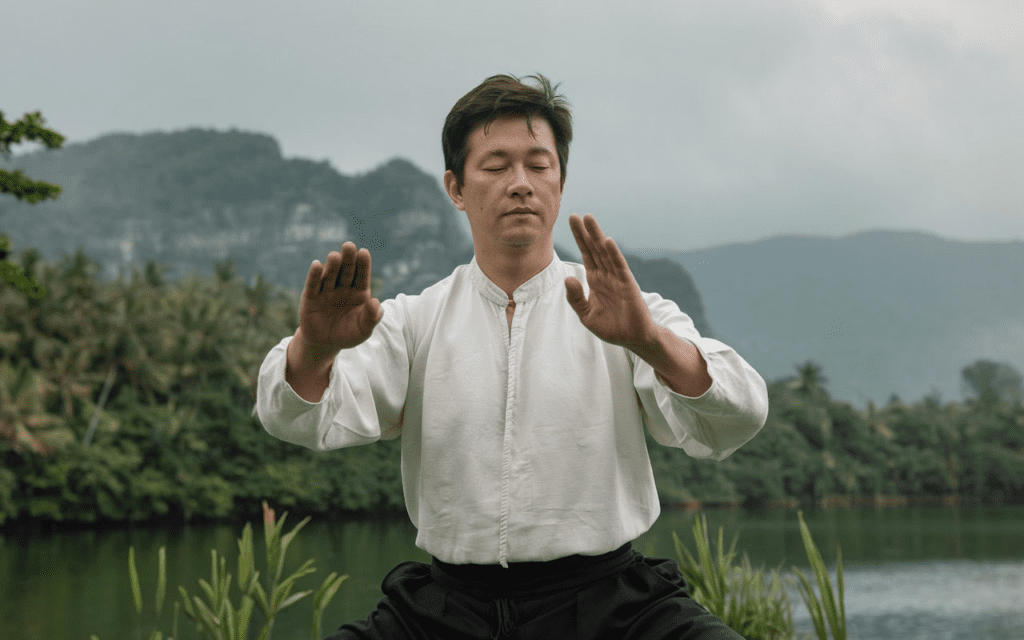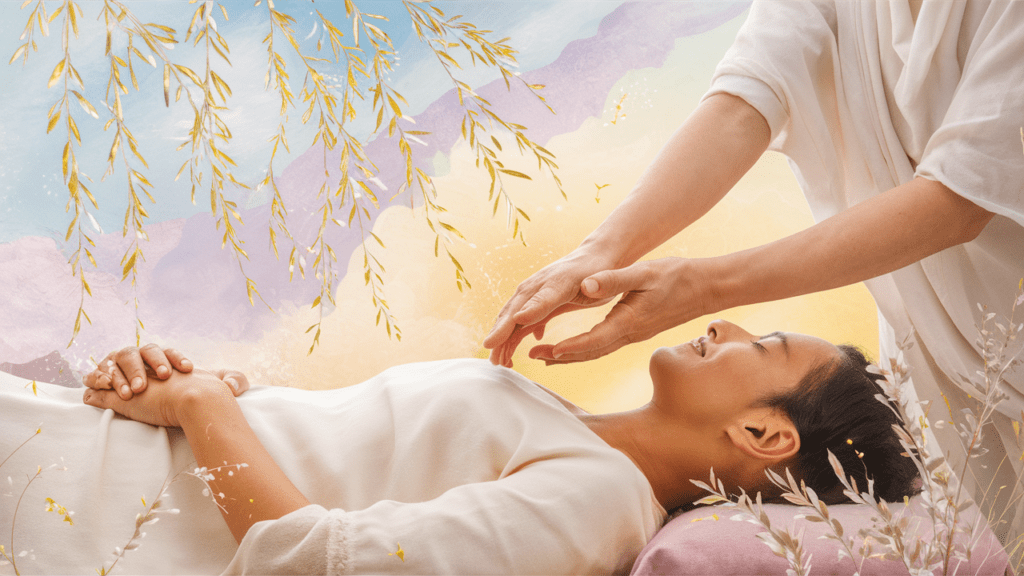In life, just as in martial arts, there is a profound power in yielding to energy rather than resisting it. Yielding is the process of allowing external forces or emotional energy to move through us without creating blockages or disrupting our natural state of being. This concept can be applied to both our physical and emotional selves. When we understand the role our chakras play in this energetic flow, we can better manage our emotional and spiritual well-being.

In Wing Chun and practices like Tai Chi, yielding allows us to absorb and redirect energy for a more powerful response, whether it’s from a physical opponent or the energies within ourselves. In Tai Chi, there is no physical opponent—only you and your internal energy, or chi. The goal is to maintain balance and flow, working with the natural energy of the body and universe, rather than fighting against it. This concept also applies to the emotional energy we encounter in daily life.
But to fully grasp the power of yielding, we must also understand how it relates to the chakras—the energy centers within the body that govern our physical, emotional, and spiritual states.
Chakras and Their Influence on Energy Flow
The chakra system consists of seven main energy centers, each associated with specific physical and emotional functions. When we encounter emotional energy—whether from external sources or internal conflicts—our chakras are responsible for processing and managing that energy. If we resist or hold onto negative energy, we disrupt the flow between our chakras, leading to emotional, spiritual, or even physical imbalances. Yielding, on the other hand, allows the energy to move through the chakras without obstruction, promoting healing and balance.
Here’s a brief overview of the seven main chakras and how yielding can positively impact them:
Root Chakra (Muladhara)
- Location: Base of the spine
- Represents: Security, survival, and grounding
- Body Parts: Legs, feet, bones, large intestine
- When we yield and allow fear-based energy (e.g., insecurity, survival anxiety) to flow through us, the root chakra stabilizes, keeping us grounded and secure.
Sacral Chakra (Svadhisthana)
- Location: Lower abdomen, about two inches below the navel
- Represents: Creativity, emotions, and sexuality
- Body Parts: Reproductive organs, kidneys, bladder
- Yielding to emotions related to shame or guilt allows this chakra to process those energies, encouraging creativity and healthy emotional expression.
Solar Plexus Chakra (Manipura)
- Location: Upper abdomen, near the diaphragm
- Represents: Personal power, confidence, and will
- Body Parts: Digestive system, pancreas, liver
- By yielding to feelings of doubt or insecurity, we free the solar plexus from energetic blockages, empowering us to act confidently and assertively.
Heart Chakra (Anahata)
- Location: Center of the chest
- Represents: Love, compassion, and connection
- Body Parts: Heart, lungs, thymus
- Yielding to the energy of grief or heartbreak allows the heart chakra to remain open, encouraging deeper compassion and connection without being weighed down by past pain.
Throat Chakra (Vishuddha)
- Location: Throat
- Represents: Communication, self-expression, and truth
- Body Parts: Throat, vocal cords, thyroid
- Yielding to the fear of judgment or criticism opens the throat chakra, enabling clear and authentic self-expression.
Third Eye Chakra (Ajna)
- Location: Between the eyebrows
- Represents: Intuition, insight, and inner wisdom
- Body Parts: Eyes, brain, pituitary gland
- Yielding to confusion or uncertainty allows the third eye chakra to expand, enhancing intuition and perception of higher truths.
Crown Chakra (Sahasrara)
- Location: Top of the head
- Represents: Spiritual connection, enlightenment, and divine consciousness
- Body Parts: Brain, nervous system
- By yielding to the fear of the unknown or spiritual disconnect, we open the crown chakra, facilitating a deeper connection to the divine and the universe.
Yielding and Tai Chi: The Art of Internal Energy Flow
In Tai Chi, there is no physical opponent, only the self and the internal flow of energy. The practice of Tai Chi teaches us to move with energy, yielding to its natural flow rather than resisting it. Just like in Wing Chun, where the practitioner redirects an opponent’s force, in Tai Chi, the practitioner redirects internal energy to maintain balance and harmony. This can be incredibly powerful in terms of emotional healing, as it allows us to process negative emotions and release them without clinging to them.
Tai Chi is a moving meditation that helps us realign our chakras, letting energy flow freely throughout the body. When we practice Tai Chi, we focus on the natural flow of chi, which can help us process emotional energy more effectively. Rather than being overwhelmed by anger, fear, or sadness, we allow these emotions to pass through, maintaining a state of inner peace and balance.
The Power of Yielding in Everyday Life
When we apply the concept of yielding in our everyday lives, we allow ourselves to absorb and process negative energy without letting it define us. Yielding teaches us that we don’t have to hold onto fear, anger, or sadness. Instead, we can let these emotions flow through us, much like energy moves through the chakras, allowing us to return to our higher vibrational state.
Our energetic well-being is not determined by the emotions we experience but by how we handle them. When we yield to the emotional energy, rather than resisting it or holding onto it, we maintain a healthy flow of energy through our chakras and prevent energetic blockages.
For more thought-provoking insights and to join the conversation, follow us on Instagram and YouTube. Embrace the journey of higher consciousness and awaken to a new reality.
Discover deeper transformative practices in our book, A Guide to Unmatrix Yourself, available on our website and Amazon. Visit A Guide to Unmatrix Yourself for more details.


